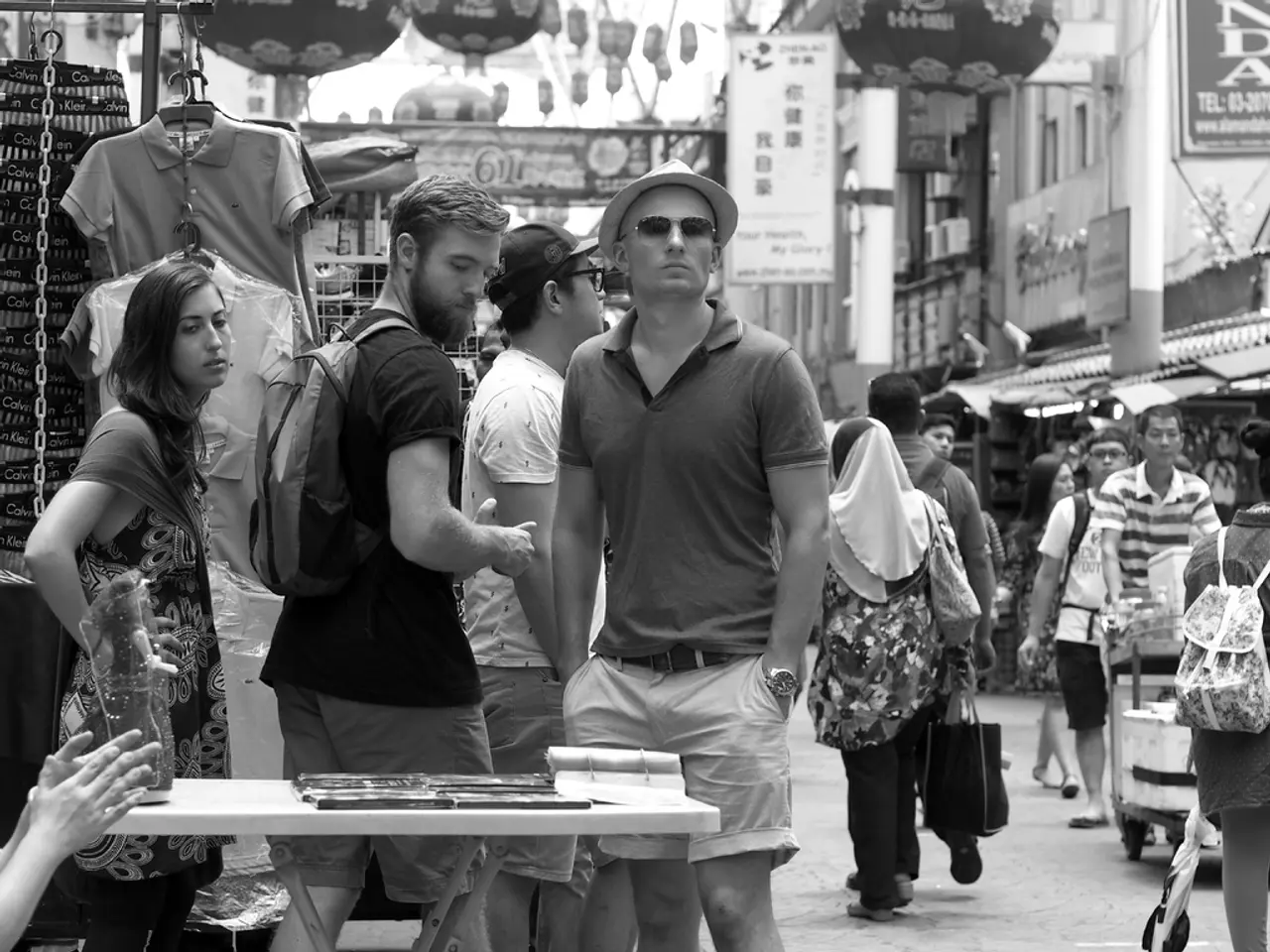Delving into the Pulse of Flushing's Main Street: Investigating its Extensive Influence in Queens
In the heart of New York City lies Flushing Main Street, a bustling hub that has been deeply embedded in the city's life and function for centuries. This vibrant street, with its narrow streets and tight intersections, is a testament to the neighborhood's rich history and commitment to diversity.
Flushing Main Street's history dates back to the 17th century when it was first established by Dutch settlers in 1645 as part of New Netherland. Originally named Vlissingen after a Dutch city, Flushing quickly became a notable settlement for its diversity and early stance on religious freedom.
A pivotal moment in Flushing's history is the Flushing Remonstrance of 1657. This bold protest against New York’s then-governor Peter Stuyvesant’s decree banning Quaker worship was a stand for religious tolerance and freedom. The document, which protects diverse religious beliefs including Presbyterian, Independent, Baptist, and Quaker faiths, is considered a foundational statement for religious freedom in America.
As time progressed, Flushing evolved from a largely residential and suburban area into a major commercial hub in the 20th century, particularly after the Immigration and Nationality Act of 1965. This legislation removed earlier immigration quotas and allowed increased influx of Asian immigrants, especially Korean and Chinese communities, which have since shaped Main Street culturally and economically. Today, Flushing Main Street stands as a vibrant multicultural center with a broad range of shops, restaurants, and services reflective of its diverse population.
In addition to this, Flushing has grown into one of New York City's largest business districts outside Manhattan, with downtown Flushing being the third busiest commercial area in New York City, centered on Main Street and Roosevelt Avenue.
The streets are lined with storefronts and food stalls offering various cuisines, from traditional Korean barbecue to mouth-watering Chinese dumplings. The U.S. Post Office, banks, and schools such as John Bowne High School and Flushing High School are also located in the Flushing Main Street area, making it an educational anchor and a hub for commuters.
Tangram and SkyView Center, located a few blocks away from Main Street, have added modern shopping spaces to the neighborhood, further enhancing its commercial appeal. Buses and cars honk as they move through the crowded streets, with commuters, students, and families passing through. The Queens Public Library at Flushing serves as an essential resource for locals, while the Long Island Rail Road (LIRR) station, located near Flushing Main Street, connects all four counties of Long Island.
The Flushing Remonstrance and Flushing Main Street together symbolize the neighborhood's long-standing commitment to diversity, religious freedom, and cultural pluralism, which continue to define the character of the community today. Whether you're stepping onto a Flushing Main Street bound 7 local train or navigating the narrow streets, you're immersed in a melting pot of cultures, traditions, and flavors that make Flushing a unique and unforgettable part of New York City.
- The history of Flushing Main Street dates back to the 17th century when it was first established, named Vlissingen after a Dutch city.
- Flushing Experienced a significant change during the 20th century, becoming a major commercial hub, particularly after the Immigration and Nationality Act of 1965.
- Today, Flushing Main Street stands as a vibrant multicultural center, offering a wide variety of shops, restaurants, and services that reflect its diverse population.
- In addition to businesses, Flushing is also home to educational institutions like John Bowne High School and Flushing High School, making it an educational anchor.
- The modern shopping spaces, Tangram and SkyView Center, located a few blocks away, further enhance the commercial appeal of the neighborhood.
- The area is well connected, with the Queens Public Library and Long Island Rail Road station offering essential resources and transportation to all four counties of Long Island.
- The Flushing Remonstrance, a symbol of religious freedom and cultural pluralism, coupled with the bustling Flushing Main Street, continues to embody the neighborhood's unique character that makes it a significant and memorable part of New York City.




